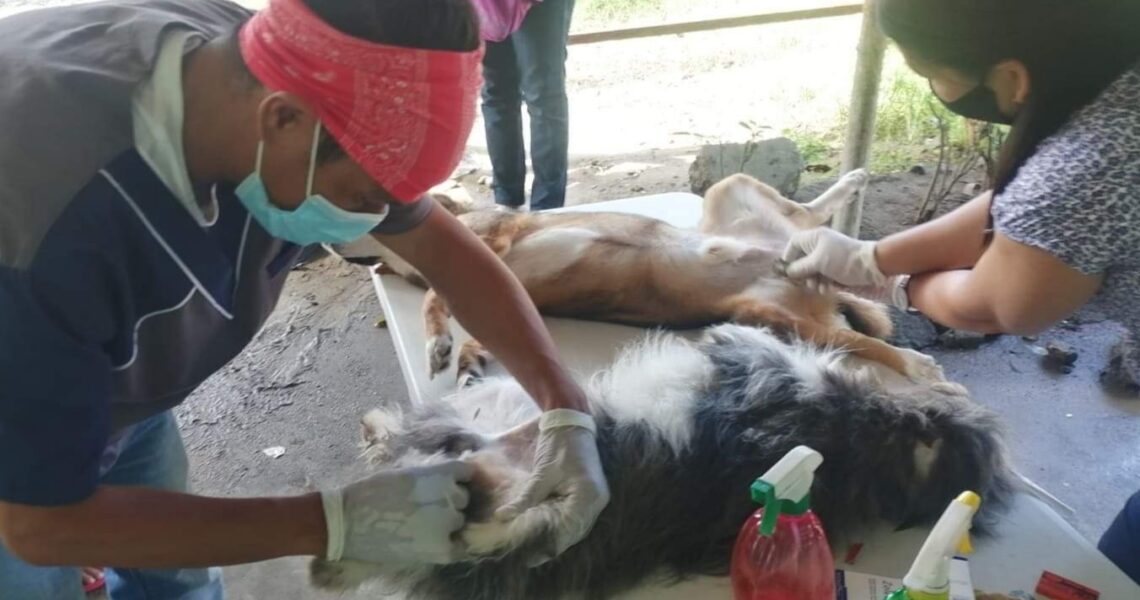Vaginal Tumors – the second most common reproductive tumor, comprising 2.4–3% of all tumors in dogs.
Dogs—86% benign smooth muscle tumors, often pedunculated (e.g., leiomyoma, fibroleiomyoma, and fibroma); lipoma, transmissible venereal tumor, mast cell tumor, squamous cell carcinoma, leiomyosarcoma, hemangiosarcoma, osteosarcoma, or extension of primary urinary tract carcinomas also reported.
Dogs—may be an incidental finding at necropsy.
Cats—extremely rare; usually of smooth muscle origin.
Hormonal influence—may play a role in the development of leiomyomas, fibromas, or polypoid tumors.
SIGNALMENT
Dog—mean age, 10.2–11.2 years, boxers, nulliparous bitches.
Cat—no data available.
SIGNS
Dogs
Extraluminal—slow-growing perineal mass; vulvar discharge; dysuria; pollakiuria; vulvar licking; dystocia.
Intraluminal—mass protruding from the vulva (often at estrus); vulvar discharge; stranguria; dysuria; tenesmus.
Cats
Firm mass
Constipation
CAUSES & RISK FACTORS
Intact sexual status (hormonal influence)
Nulliparous bitches more commonly affected
DIAGNOSIS
DIFFERENTIAL DIAGNOSIS
Vaginal prolapse
Urethral neoplasia
Uterine prolapse
Clitoral hypertrophy
Vaginal polyp
Vaginal abscess/granuloma
Vaginal hematoma
CBC/BIOCHEMISTRY/URINALYSIS
No consistent abnormalities
IMAGING
Thoracic radiography—recommended; assess for pulmonary metastatic disease.
Abdominal radiography—may detect cranial extension of a mass.
Ultrasonography, vaginography, and urethrocystography—may help delineate mass.
CT/MRI—definitive delineation of tumor, assess for surgical feasibility, assess for metastatic disease.
DIAGNOSTIC PROCEDURES
Vaginoscopy with cytologic examination of an aspirate—may help determine cell type.
Biopsy with histopathologic examination—often necessary for definitive diagnosis.
PATHOLOGIC FINDINGS
Intraluminal—vestibular wall; protruding into the vulva; may occur singularly or as multiple masses.
Extraluminal—vestibular roof; causing a bulging of the perineum.
TREATMENT
Surgical excision and concurrent ovariohysterectomy—treatment of choice.
Postoperative radiotherapy—may be of benefit for sarcoma and incompletely resected benign tumors.
MEDICATIONS
DRUG(S)
Postoperative therapy—no standard established.
Doxorubicin, cisplatin, or carboplatin—rational choice to palliate malignant or metastatic disease.
Piroxicam may be useful especially for those dogs with primary urinary tumors extending into the vagina and carcinomas.
CONTRAINDICATIONS/POSSIBLE INTERACTIONS
Doxorubicin—carefully monitor with underlying cardiac disease; consider pretreatment and serial echocardiograms and ECG.
Cisplatin—do not use in cats (fatal); do not use in dogs with renal disease; always use appropriate and concurrent diuresis.
Chemotherapy may be toxic; seek advice if you are unfamiliar with chemotherapeutic drugs.
Piroxicam should not be used with other NSAIDs or prednisone and should be avoided in animals with underlying renal or hepatic disease. Should not be used in conjunction with cisplatin.
FOLLOW-UP
PATIENT MONITORING
Thoracic and abdominal radiography—consider every 3 months if tumor is malignant.
CBC (doxorubicin, cisplatin, carboplatin), biochemical profile (cisplatin, piroxicam), urinalysis (cisplatin, piroxicam)—perform before each chemotherapy treatment.
EXPECTED COURSE AND PROGNOSIS
Prognosis—good with complete excision; guarded if incomplete excision; poor with metastatic disease; poor with carcinoma or squamous cell tumor.
Recurrence—15% (leiomyoma) without concurrent ovariohysterectomy.
MISCELLANEOUS
ASSOCIATED CONDITIONS
Cats—reported concurrent cystic ovaries and mammary gland adenocarcinoma.
ABBREVIATIONS
CT = computed tomography
ECG = electrocardiogram
MRI = magnetic resonance imaging
NSAID = nonsteroidal anti-inflammatory drug
Visit your veterinarian as early recognition, diagnosis, and treatment are essential.

